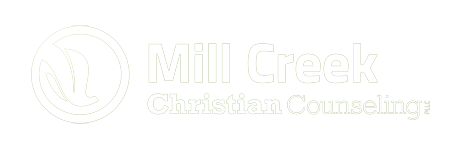Our relationships are an important part of what makes us who we are. Not only do our relationships contribute to our flourishing, but the patterns we form and the people we surround ourselves with reflect our values and how we navigate the world. It’s also true to say that we aren’t always conscious of what we’re doing in our relationships, nor do we find it easy to pinpoint issues that may exist in those relationships, especially in a codependent relationship.
This article aims to help you identify any codependent patterns in your relationships. Codependency can exist in the parent-child relationship, between siblings, among coworkers, and in romantic partnerships. A codependent dynamic can be damaging to both individuals in the relationship, even though they might be entirely unaware of it or how it’s impacting them. It makes it all the more important to know how to identify codependency.
What is codependency?
Cooperation and mutual support are essential in healthy relationships. One person can accomplish a lot, but bringing together our collective genius and skill to accomplish a goal brings something to the whole that goes beyond simply achieving what you set out to do. A thriving life requires a collective effort, even when it isn’t apparent. We’re all dependent on each other in one way or another.
There is some degree of mutual dependence that will always exist in a relationship. Romantic partners will lean on each other for support and encouragement; they are each other’s cheerleaders, and they help keep each other accountable. This, however, is different from the kind of dependence that happens in a codependent relationship. Codependency is marked by being overly dependent on one another, to the point of losing one’s identity.
In a codependent relationship, one person supports and enables another’s dysfunctional behaviors. This dependence may be physical, financial, or emotional, and the codependent dynamic supports destructive behavior or another person’s underperformance in one or more areas of their life. The result is that the enabler burns out, and the one who’s enabled loses opportunities at personal growth and autonomy.
Key Behavior in a Codependent Relationship: Signs and Symptoms
Defining codependency could be helpful to you, but perhaps naming the specific signs of it could take you one step closer to identifying it in your life. It may be challenging to identify codependent behaviors in a given relationship, but there are some signs to look out for that can help you. Some signs and symptoms of codependency to look out for include:
A lack of boundaries A boundary is a psychological demarcation that allows a person to retain their individuality and determine their limits. Boundaries are necessary for healthy relationships.
In a codependent dynamic, one or both partners have difficulty setting and maintaining healthy boundaries, resulting in an unhealthy overidentification with one another. A lack of boundaries might result in over-involvement, by constantly monitoring the other’s decisions or activities.
Enabling and rescuing behavior The person may support or excuse their partner’s destructive behaviors and not require accountability from them. It could be covering up substance abuse or addiction, providing financial support without encouraging responsibility or setting boundaries, or otherwise constantly rescuing the other from their problems or the consequences of their actions.
Over-reliance One partner may rely too much on the other for emotional support, a sense of validation, or their sense of identity.
People-pleasing This is also somewhat connected to the lack of boundaries, but people pleasing is when a person doesn’t want to upset someone, whether by offering a contrary opinion, setting a boundary, or simply refusing to agree to a request. The result is prioritizing a partner’s needs and requests over one’s own, often at the expense of their own well-being.
Emotional caretaking Instead of letting their partner take responsibility for their own well-being, a codependent partner takes on an excessive amount of emotional responsibility for their partner, and this often results in mental, physical, and emotional burnout.
Loss of identity One or both partners may lose their autonomy or sense of identity. They lose touch with what they like, their personality, and their limits. The one whose behavior is enabled by the relationship may have difficulty making decisions for themselves, particularly without the input or approval of the other partner.
Unhealthy communication patterns The dynamic in a codependent relationship will often result in unhealthy patterns of communication. These may include blame, constant criticism, and defensiveness, which causes the relationship to be marked by stress, drama, and constant conflict.
 Feeling resentful or drained Sometimes, there is financial dependence in codependent situations; one partner might control the finances, which makes the other feel trapped or fully reliant on them. The partner who functions as the rescuer or enabler will often seek to control the partner they enable, which can result in frustration for both, as well as feelings of resentment and exhaustion. One or both partners might feel trapped.
Feeling resentful or drained Sometimes, there is financial dependence in codependent situations; one partner might control the finances, which makes the other feel trapped or fully reliant on them. The partner who functions as the rescuer or enabler will often seek to control the partner they enable, which can result in frustration for both, as well as feelings of resentment and exhaustion. One or both partners might feel trapped.
A lack of personal growth One result of a codependent dynamic is a lack of personal growth for one or both partners in the relationship. To maintain the codependent dynamic, one or both individuals, typically the enabler, feel compelled to sacrifice their interests, personal growth, and goals to maintain the relationship and be present for the other. It can be another source of resentment.
The Impact of a Codependent Relationship
If you find yourself in a codependent relationship, it can impact you in several ways. One of the challenges of codependent relationships is the emotional distress that arises from frequent conflict, the neglect of personal boundaries, and other ongoing struggles. Codependent relationships can also limit personal growth, self-expression, and autonomy, all qualities that healthy relationships tend to nurture and delight in.
Being codependent can contribute to unhealthy, abusive, or toxic relationships. Instead of holding one another accountable, the codependent dynamic will enable, excuse, and support harmful behaviors that harm both partners. This aspect of codependency is rooted in the underlying emotional and psychological issues that led people to engage with others in this lopsided manner.
Identifying Codependent Behavior and Turning Things Around
Some of the issues that underpin codependent behavior include a poor sense of self, which may stem from past trauma, neglect, or emotional pain that hasn’t been resolved properly. In some instances, codependency develops as a coping mechanism for dealing with these unaddressed issues, leading to low self-esteem and a fragmented self-identity. Additionally, the fear of abandonment or rejection may further fuel codependency.
Codependency can stifle your personal growth, and it can significantly harm both parties in a relationship. The good news is that it’s possible to turn things around for yourself and your relationships as well. The first step is to identify codependent dynamics in your relationships, or codependent tendencies in yourself. From there, you can begin taking intentional steps to overcome those dynamics and foster healthier, more balanced connections.
Self-awareness Self-awareness is key; take time to reflect on your behavior in relationships with others and consider whether you consistently prioritize your partner’s or others’ needs above your own. Do you set aside your well-being, overlook pressing tasks, or put yourself in a tight spot to help or bail out the other person? Or do you find yourself enabling their behavior and avoiding holding them accountable?
Evaluate your boundaries You can also survey your relationships and assess whether you have healthy boundaries in your relationships, and whether you manage to maintain your own identity. Do you have opinions of your own that you assert freely? Can you make decisions independent of others’ input or approval, where you deem it a wise course? Are you able to say “No” to others to achieve your goals or to rest?
Establish healthy boundaries Setting healthy boundaries is important for you to nurture healthy relationships and to preserve your identity. Boundaries are also essential as they provide you with room to rest and perform self-care, which enhances your well-being.
Seek perspective and wisdom You can talk to loving and wise friends and family, or a professional, like a therapist, about your relationship and seek their honest feedback. If you seek support from a therapist, they can help you identify codependent relationship patterns, uncover the roots of that codependency, and walk with you as you build more balanced and fulfilling relationships with yourself and others.
If you’d like support in breaking free from codependent patterns, we are here to help. Contact our office today to learn more and to schedule an appointment.
Photo:
“Lavender”, Courtesy of Le sixième rêve, Pexels.com, CC0 License





